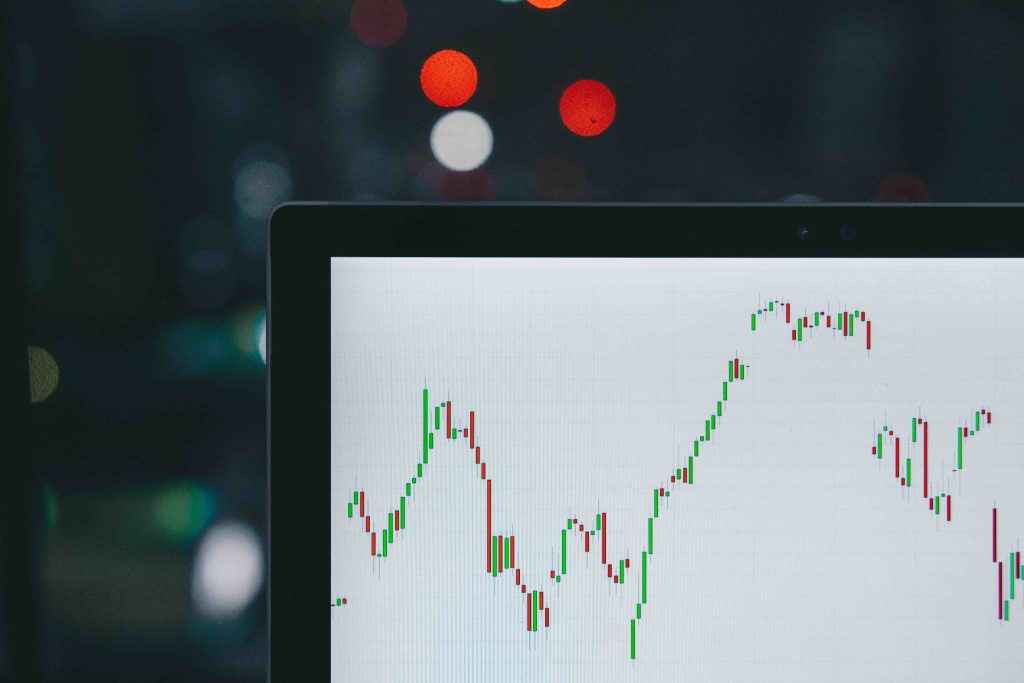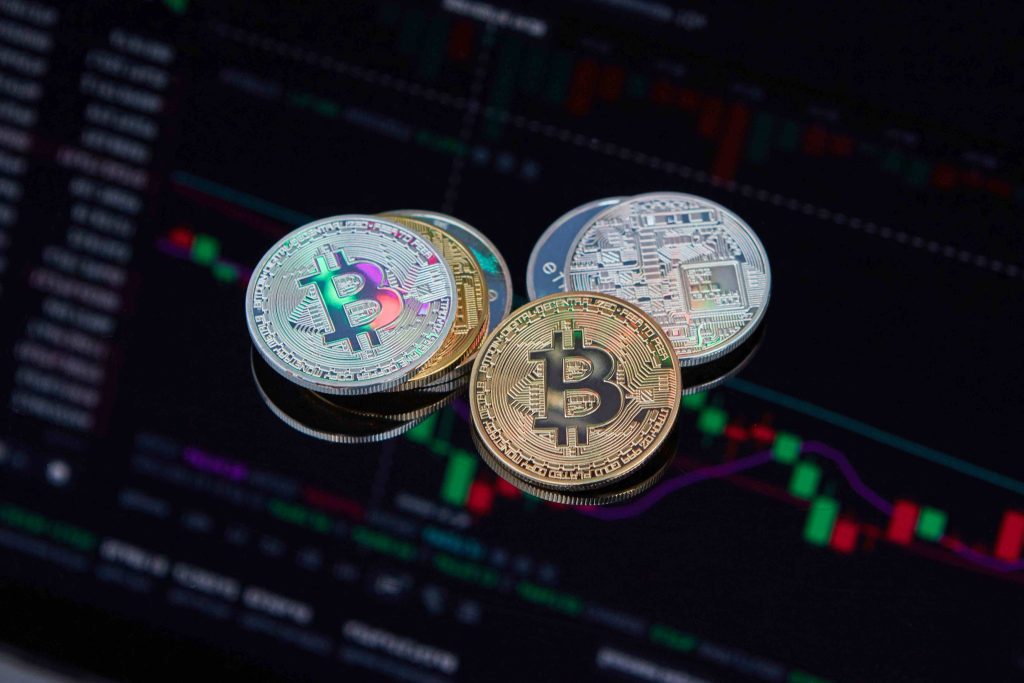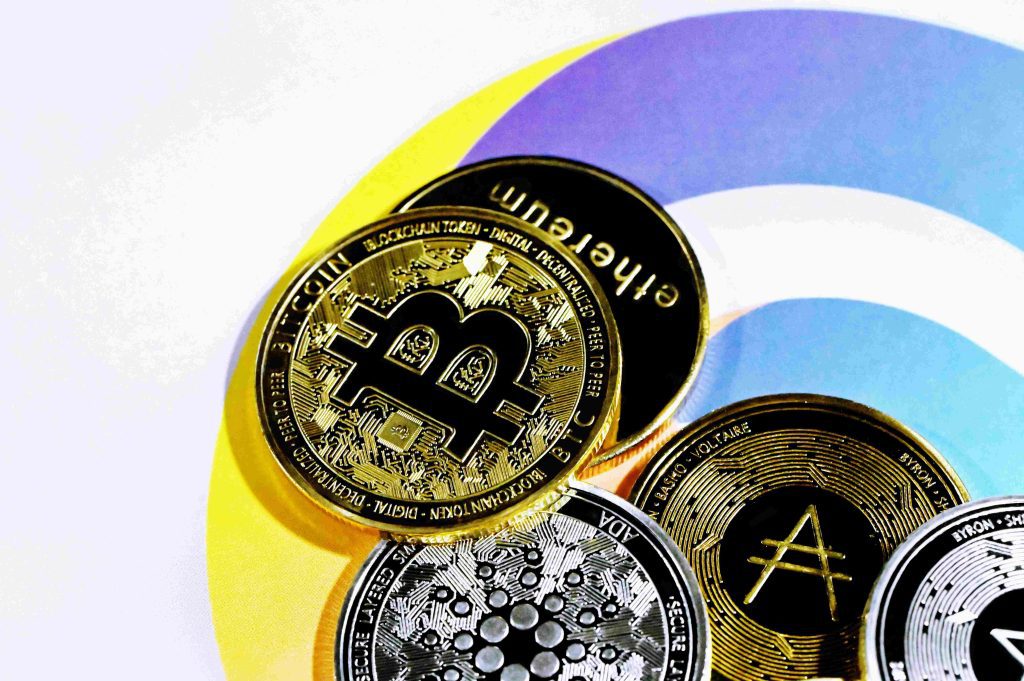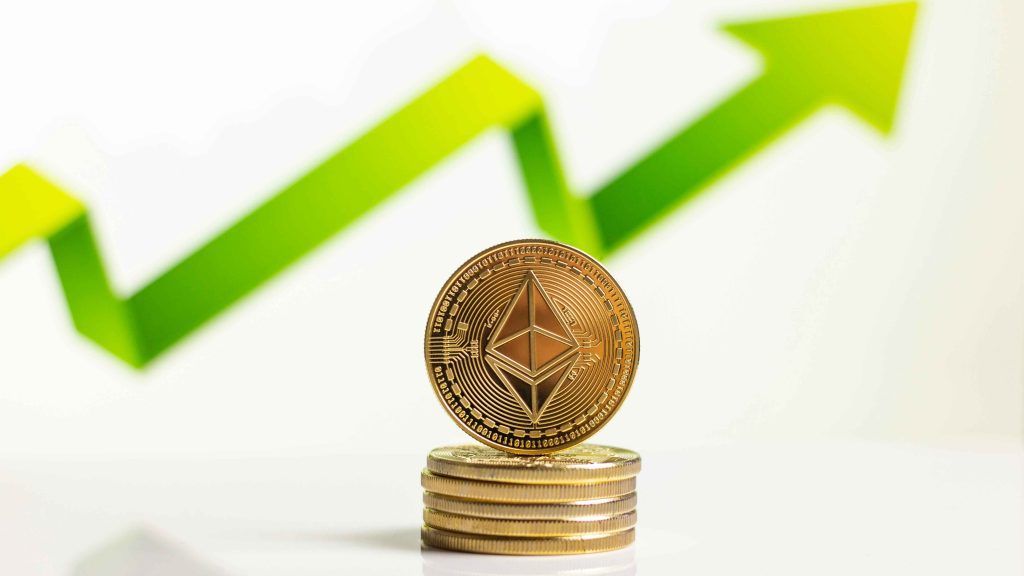Altcoins, or alternative coins, are often cryptocurrencies other than Bitcoin. Altcoins offer their traders a myriad of unique opportunities in that not all of them will be able to diversify their portfolios to trade altcoins. Other altcoins carry other values, providing better forms of privacy and increasing the transaction speed or enabling much more complex smart contracts.
What are Altcoins: A Quick Introduction
Before you how to trade altcoins are alternative cryptocurrencies to Bitcoin. With Bitcoin’s success already established, altcoins came into existence to surpass perceived shortcomings. Altcoins apply similar blockchain technology to Bitcoin but offer new functionalities and innovation in their network.

Core Characteristics of Altcoins
Dissimilarities in Technology Differences: The majority of altcoins utilize some other algorithms such as X11 or Scrypt as opposed to the SHA-256 utilized by Bitcoin. This brings about differences in security, efficiency, and the complexity of mining.
Purpose and Usage: Actually, the primary purposes are what most altcoins are primarily used for. For instance, while some altcoins are designed for smart contracts and decentralized applications such as Ethereum, Litecoin is meant to enhance transaction processing speed.
Market Position: Market capitalization and trade altcoins volume for altcoins are not uniform. Altcoins like Ethereum and XRP have a higher amount of market liquidity and stability as compared to small-cap coins.
Consensus Mechanisms: Altcoins use other mechanisms such as Proof-of-Stake (PoS), Delegated Proof-of-Stake (DPoS) instead of Proof-of-Work (PoW), used in the case of Bitcoin, thus making mining processes energy efficient as well as democratic in nature.
Categories of Altcoins:
Payment Coins: These are cryptocurrencies that are supposed to be electronic money, instead of the physical money that is normally used. There are Litecoin and Bitcoin Cash, among others.
Stablecoins: These trade altcoins are pegged to the traditional currencies, so their market prices will not fluctuate as other investments do. Examples include Tether (USDT) and USD Coin (USDC).
Utility Tokens: These are access keys for a blockchain ecosystem toward accessing a particular product or service. Examples include Binance Coin (BNB) and Chainlink (LINK).
Security Tokens: Represent a claim on an external asset like equity or real estate. Some examples include tokens such as POLY by Polymath.
Pros and Cons:
Pros
Innovation: Altcoins are an innovation aspect in the technology industry. They give people new inventions.
Diversification: Investing in altcoins does offer portfolio diversification in the volatile cryptocurrency market.
Cons
Volatility: Price volatility is one of the main risks because the altcoins are highly volatile.
Regulatory Uncertainty: Altcoin projects majorly operate under unclear regulatory environments, hence affecting stability and growth.
Understanding altcoins requires understanding their diversified technological frameworks, differences in use cases, and the risk-reward dynamics that they present within the cryptocurrency marketplace.
Cryptocurrency Exchange Selection
Choosing an exchange marks the beginning to trading altcoins profitably. The right platform would make all the difference about the efficiency, security, even profits. Here is what to look out for in choosing:

Reputation and Security
- Check the timeline regarding the existence of the exchange and user reviews.
- Look for exchanges that have two-factor authentication (2FA) and store coins in cold storage.
- Look whether or not the exchange had a history of security breaches.
Support for Altcoins
- The exchange must be able to support a variety of altcoins.
- Track the time taken for the listing of new altcoins.
- Determine if the particular altcoins you have planned to trade altcoins are available on the platform.
Trading Fees
- Determine the trade altcoins fees with the respective exchanges.
- Be mindful of maker fees, taker fees, withdrawal fees, and deposit fees.
- Select that exchange which clearly communicates its fee structure
Liquidity
- High liquidity has decreased latency and perhaps better prices.
- Choose the exchanges with high trading volumes for the altcoins you wish to trade.
- Examine the depth of an order book as a precursor to appreciating how liquid an order book actually is.
User Experience and Interface
- In line with assessing how easy it is to use any trading platform.
- The best ones will have intuitive interfaces that make trading a breeze.
- Test whether mobile apps are available as well as are working, if you consider this aspect of trading by mobile of value.
Regulation and Compliance
- Guarantee that an exchange is compliant and adheres to relevant laws and regulations in your area of domicile.
- KYC is one of the prerequisites for exchange, so it requires Know Your Customer verification.
- Ensure that exchange protects you with some legal safeguards.
Customer Support
- Check if customer support is available through the following methods: live chat, email, or phone.
- Research user experiences in terms of support responsiveness and effectiveness.
- Check if support would be available in your native language.
Advanced Options
- Check which exchanges offer margin trading, API, or futures contracts.
- Find exchanges that provide detailed analytics, graphing, and educational tools.
- Consider whether the exchange allows you to stack or provides interest-bearing accounts to hold altcoins.
After going over these factors carefully, the trader will be able to find an exchange that suits the plans and goals of trade altcoins.

How to Research Altcoins Before Trading?
How to trade altcoins? Research will be quite necessary before starting altcoin trading. First of all, you find out what the altcoin is trying to do. This is achieved by looking at the whitepaper that will detail the kind of technology being used, the kind of vision that the team has, and the kind of use cases that the trade altcoins is going to apply. Here, the project’s problem, its underlying technology, and the future development roadmap are described.
Team and Community
Research the team behind the altcoin. Verify their credibility, expertise, and previous work. Good team is one of the first indicators of a potentially good project. The second thing to analyze is the community around the altcoin. Proper activity in Reddit, Telegram, and Twitter indicates a lively, community-liked atmosphere around the altcoin. That’s really important for long-term growth.
Market Metrics
Analyze major market metrics such as:
Market Capitalization: This lets you know the size of the project and if it is dominant in the market.
Trading Volume: It further allows you to understand the liquidity and how easily an altcoin is bought or sold in the given market.
Circulating Supply: An understanding of the number of coins which are currently available in the market and the total supply.
Technological Aspects
Understand its technological underpinning and breakthroughs. Read through the blockchain, its consensus mechanisms, scalability, and security. A robust technical foundation is the very bedrock with which not only will the utility of an altcoin be amplified but its staying power, as well.
Partnerships and Integrations
Research partnerships with known company entities or other blockchain projects. The possible presence of strong partnerships can enhance the credibility, adoption, and real applications of an altcoin in the real world. Integrating with current systems can carry a potential as well for growth.
Regulatory Compliance
Analysis of the regulatory environment for the altcoin. Evaluate whether the project is in compliance with statutory and regulatory provisions at various jurisdictions. Compliance with relevant regulations will reduce the danger of eventual litigations issues that would undermine the credibility of the project and investor confidence.
Media Coverage and Sentiment
Media coverage and sentiment play a considerable role in altcoin valuations. Any good news combined with endorsement or recognition by influential people or the media will see valuation of any altcoin increase. Utilizing tools such as social media sentiment analysis, which helps measure public sentiment, is very vital.
Through a detailed assessment of these factors, trading altcoins becomes a more informed decision and reduction of risks encountered in altcoin trading. Altogether, these factors result in painting a vivid picture of the altcoin’s potential and viability in the highly competitive crypto market.
Risk Management Measures
How to trade altcoins for profit with managing risks? Profit trade altcoins carries inherent risks that need effective management. Implementing radical risk management strategies can help protect investment and create long-run profitability.
Setting Clear Stop-Loss Orders
One fundamental measure is to set clear stop-loss orders. The safety net measure of stop-loss orders lets one sell a particular position through automatic selling once it has reached a particular level of pricing, thus limiting the potential losses. The trader should :
- Determine an acceptable percentage of loss on each trade.
- Enter stop-loss orders below the significant levels of support.
Portfolio Diversification
Diversification of a portfolio ought to be implemented. Diversification of a portfolio refers to the spreading of risk across a myriad of assets. This, consequently, limits the adverse effects of a given poor-performing asset on a portfolio. Some of the methods include;
- Allocation of investments among trade altcoins
- Use of stablecoins or even traditional assets to reduce volatility
Position Sizing
It refers to the assignment of the appropriate amount of capital to every trade based on the individual risk appetite. Some guidelines are:
- Applying the 1% rule, that is, more than 1% of the capital is not invested in one trade.
- Relative position size going with volatility.
Regular Market Studies
It ensure the basis of sound trading. Some of the aspects include:
- Study of the price action and trends in the past
- Knowledge of present market news and events that will impact the price of the altcoin.
Risk/Reward Ratios ensures that the money made is well worth the risk taken. In most instances, people use:
“Aiming for a minimum of 1:2 risk/reward ratio, which means that potential profit should at least be double the potential loss.”
Trading Journal
A trading journal is helpful in keeping abreast of how performance is developing and what kinds of patterns appear in decisions. A trader should:
- Record entry and exit points, strategies used, and outcomes
- Make periodic revisions and strategies in relation to insights received from the journal
Lastly, emotions are the key to trading. Emotional responses lead to impulsive decisions and losses of major monies. Some techniques are:
- None Trades to a predetermined plan without deviation.
- Closure and break to re-evaluate his trades for avoiding overtrading.
A trader can take these risk management practices to ensure prosperity more reliably in the volatile altcoin market.

How to Trade Altcoins for Profit?
Proper trading strategies are therefore necessary to be successful in an ever-changing space of trade altcoins. An alternative strategy can be used by the altcoin trader to gain maximum profit while reducing possible risks.
1. Day Trading
When an altcoin is purchased and sold within a single trading day, it forms the situation of day trading. With this strategy, minor fluctuations in the prices are exploited. However, the main tactics included include:
Intraday Chart Analysis: charts to track short-term trends and patterns of prices
Volume Indicators: monitoring the trading volumes to confirm price movements.
Stop-Loss Orders: Closing by predefined points to avoid magnifying losses.
2. Swing Trading
Swing trading looks to gain at the altcoin for a number of days till weeks. They look for ‘swings’ in any trend. Key considerations:
Trend Analysis: Identifying trends by using technical indicators, such as moving averages
Support and Resistance Levels: Identification of levels at which prices tend to reverse.
Momentum Indicators: Using instruments such as Relative Strength Index (RSI) to measure the power of price movements.
3. Scalping
Scalping is all about the tiny wins that are achieved through a huge number of trades within a rather short time. Some techniques utilized are:
Tight Speed: Making use of high-frequency trading platforms to execute trades sooner.
Tight Spread: Choosing altcoins with minimal bid-ask spreads and buying them at less price.
Risk Control: Utilizing deeply-seated risk controls, such as activating automated stop-loss orders.
4. HODLing
HODLing is a strategy that holds trade altcoins for the long run, while betting that it would appreciate substantially over time. The approach targets:
Long-term Focus: Confidence that the altcoin has staying power for the long run.
Research: Sufficient research about the basics of the altcoin.
Patience: Patient enough to weather the storm of volatility.
5. Arbitrage
Arbitrage is the process of taking advantage of the differences in prices between these various exchanges. Traders are allowed to;
Monitoring Multiple Exchange Site: Track various platforms for differences in prices.
Fast trade: Complete trades quickly for reasons of differences.
Bots and Automation: Using automated trading bots in order to optimize efficiency.
6. Leverage Derivatives
Trade altcoins with the help of derivatives like futures and options allow a altcoin trader to hedge or speculate without having the underlying asset. There are various approaches
Leverage: leverage someone else’s money to double your profit potential.
Hedging: reduces exposure to expected losses
Volatility Trading: Profits from actual volatility in the price of an altcoin.
All these techniques, strategically selected and mastered, can empower a trader to understand the market better and maximize opportunities for profit in the altcoin market.

Understanding Market Trends and Patterns
To trade altcoins profitably, comprehending market trends and patterns is crucial. Market trends reflect the overall direction in which a market is moving, and recognizing these trends early can be highly advantageous. Patterns, on the other hand, refer to recurring behaviors or formations in price movements that traders can use to predict future market directions.
Types of Market Trends
- Uptrend:
- Characterized by higher highs and higher lows.
- Indicates bullish market sentiment.
- Traders often look to buy during uptrends.
- Downtrend:
- Comes with lower highs and lower lows.
- Signifies bearish market sentiment.
- Traders may consider selling or shorting trade altcoins.
- Sideways/Horizontal Trend:
- Prices oscillate within a range without significant upward or downward movement.
- Often seen during consolidation phases.
- Traders might adopt a wait-and-see approach or trade within the range.
Identifying Patterns
Patterns are typically observed in price charts and can serve as signals for trade altcoins decisions. Some common patterns include:
- Head and Shoulders:
- Consists of two smaller peaks on either side of a larger peak.
- Often signals a reversal from bullish to bearish trend.
- Double Top and Double Bottom:
- Double Top: Indicates a transition from bullish to bearish trend.
- Double Bottom: Suggests a change from bearish to bullish trend.
- Flags and Pennants:
- Flag: Small, rectangular patterns indicating a brief market pause.
- Pennant: Small, symmetrical triangles that also indicate potential continuations after a brief consolidation.
Using Indicators
Indicators are mathematical calculations based on historical prices and volumes. Popular indicators include:
- Moving Averages:
- Simplifies the detection of trend directions.
- Types include Simple Moving Average (SMA) and Exponential Moving Average (EMA).
- Relative Strength Index (RSI):
- Measures the speed and change of price movements.
- Often used to identify overbought or oversold conditions.
- Bollinger Bands:
- Consists of a middle band (SMA) and upper and lower bands indicating volatility.
- Helps in identifying potential price breakouts.
Importance of Volume
Volume represents the number of trade altcoins within a specific time frame. High volumes often indicate strong market interest, potentially validating or negating a price trend. Monitoring volume can help in confirming patterns and trends, making it a vital aspect of trading strategy.
Conclusion
With this, trade altcoins, an avenue for profit from diversified and innovative cryptocurrency assets. Thus, the types of altcoins, alongside research of the assets themselves, will do perfect justice to helping traders navigate through these volatile grounds with more confidence. Others include proper exchanges, market trends, whether day trading or HODL. A disciplined approach with continuous learning can heighten the chances of profits from the ever-evolving world of altcoin.

